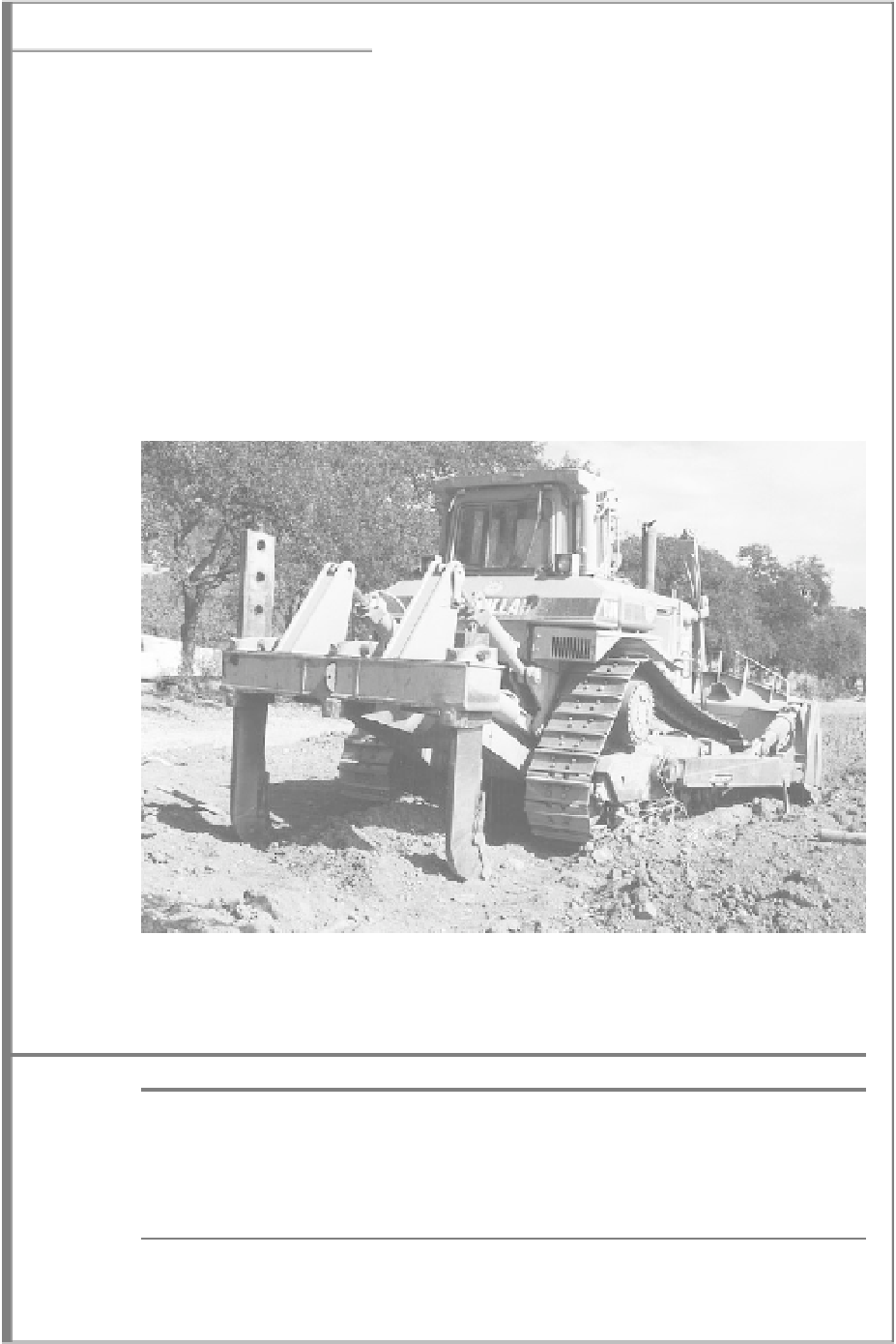Agriculture Reference
In-Depth Information
Box 8.4
Methods of Deep Ripping
Compacted soil layers and pans can be broken up by deep ripping (also called
subsoiling
), preferably to a 1-m depth. Achieving this depth requires a 1.5-m shank
and a D8 or similar tractor (fig. B8.4.1). The subsoiler blade and its angle are
chosen based on the problem to be alleviated, as shown in table B8.4.1. If the soil
is ripped at an appropriate water content and at a 2-m spacing (with wings
attached), the fissures created by the blade should intersect at the soil surface. This
is important for good drainage.
One direction of ripping is along the intended vine rows. Ameliorants such as
lime or gypsum can be broadcast before ripping, which improves their
incorporation into the subsoil. The soil is usually ripped in one other direction,
and at least one rip line should run downslope to avoid waterlogging in winter. In
the Napa Valley of California, three-way ripping with lime and gypsum additions
is practiced.
Figure B8.4.1
D8 “Caterpillar” with deep ripping shanks. Photograph by the author.
Table B8.4.1
Recommendations for Ripping of Subsoils
Rake Angle
a
Soil Problem
Blade Type
Hard rock
Do not rip
Weathered rock
Use wingless blade
Cemented pans
Use wingless blade
Clay subsoil
Use winged blade
20° from horizontal
Compacted sands
Use 90° point
a
The angle of the blade is critical for proper lift and shattering of the soil, with minimal lateral
compaction.
Source:
After Cass et al. 1998

